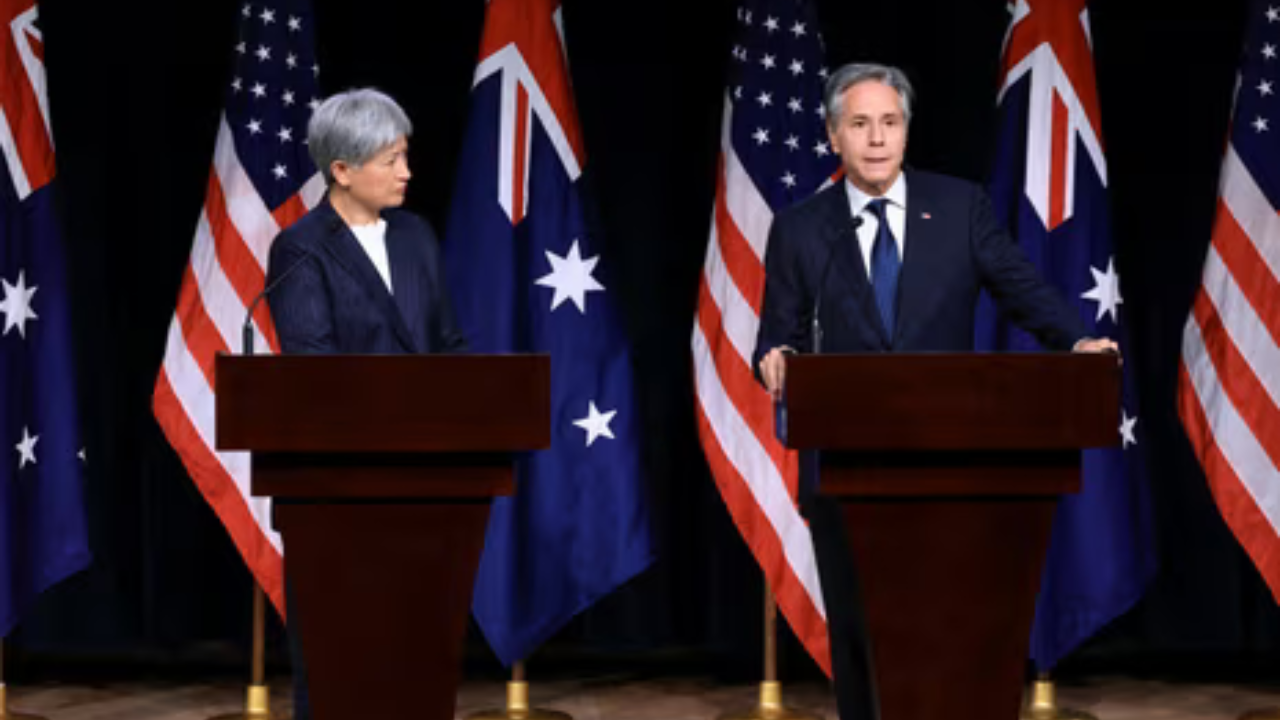US Says It Aims to ‘Lower Temperature’ in Middle East: A Step Toward Peace and Stability
The United States is striving to ease tensions in the Middle East, as highlighted by the country’s ambassador to the UN, amid concerns about potential Iranian retaliation against Israel. On Tuesday, Ambassador Linda Thomas-Greenfield addressed the UN Security Council in New York, expressing the US’s commitment to “deter and defend against any future attacks and prevent regional conflict.”

This concern stems from fears that Iran may retaliate against Israel following the assassination of Hamas leader Ismail Haniyeh in Tehran in July—a killing for which Israel has not claimed responsibility.
US President Joe Biden has suggested that brokering a ceasefire between Israel and Hamas in Gaza could help prevent an Iranian attack on Israel. “That’s my expectation, but we’ll see,” Biden remarked when asked by a reporter on Tuesday. He remained cautiously optimistic, saying, “We’ll see what Iran does and what happens if there’s any attack, but I’m not giving up,” as he left his plane during a visit to New Orleans, Louisiana.
New ceasefire negotiations are set to begin on Thursday in either Doha or Cairo. However, according to reports by the New York Times and Sky News, Hamas official Ahmad Abdul Hadi has stated that Hamas will not participate in the talks.
Meanwhile, US Secretary of State Antony Blinken postponed his planned trip to the Middle East on Tuesday to focus on negotiations aimed at ending the conflict in Gaza. International mediators from the US, Egypt, and Qatar have been advocating for a ceasefire that would include the release of Israeli hostages and the return of Palestinian civilians to their homes.
In a related move, Washington has approved a $20 billion arms sale to Israel, though the delivery of these arms will take years.
At the UN Security Council meeting, Ambassador Thomas-Greenfield urged for the finalization of a ceasefire deal, emphasizing that “a broader regional conflict is not inevitable.” She reiterated the US’s primary goal: “to lower the region’s temperature, deter and defend against any future attacks, and avoid regional conflict,” stressing the importance of securing a ceasefire and hostage release in Gaza.
However, Palestinian Ambassador to the UN, Riyad Mansour, criticized the Security Council for not doing enough to halt Israel’s military operations in Gaza. “Wake up. Stop finding excuses,” Mansour said passionately, calling on the Council to take stronger action against Israel’s actions.
In response, Israeli Ambassador Gilad Erdan accused Hamas of using civilians as human shields in Gaza. Israel’s military campaign in Gaza, which began following an unprecedented attack on southern Israel on October 7 that resulted in 1,200 deaths and 251 hostages being taken, has led to significant loss of life. According to Gaza’s Hamas-run health ministry, over 39,920 people have been killed in the territory since the conflict began.
The violence has also spilled over into the Israel-Lebanon border, where daily exchanges of fire between Hezbollah and the Israeli military have resulted in hundreds of casualties since the conflict’s outset.
As international diplomatic efforts to de-escalate the situation intensify, Iran has rejected calls from the UK and other Western nations to avoid retaliating against Israel for the killing of Haniyeh.. While Israel has not confirmed its involvement in the assassination, it has placed its military on high alert.
The U.S. has issued a warning that it is bracing for “a significant wave of attacks” from Iran or its proxies, possibly as soon as this week, and has reinforced its military presence in preparation.presence in the Middle East to support Israel’s defense.
Diplomacy as a Tool for Peace
Diplomacy is often seen as the first line of defense against war. It involves negotiation, compromise, and mutual understanding—elements that are crucial in resolving disputes without resorting to violence. The US’s renewed focus on diplomacy in the Middle East is a recognition of its power to bring about change in even the most challenging situations.
One key aspect of this diplomatic approach is engaging with all stakeholders in the region, including those who have been traditionally seen as adversaries. By opening channels of communication with a diverse range of actors, the US hopes to create an environment where dialogue can replace confrontation, and cooperation can take precedence over conflict.
Addressing Root Causes
To truly lower the temperature in the Middle East, it is essential to address the underlying causes of instability. These include political grievances, economic disparities, and social tensions that have fueled unrest for years. The US’s approach acknowledges that peace cannot be imposed from the outside; it must be built from within by addressing these deep-seated issues.
This means supporting efforts to strengthen governance, promote economic development, and protect human rights in the region. By doing so, the US aims to create conditions that are conducive to peace and stability, reducing the likelihood of future conflicts.



